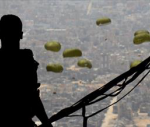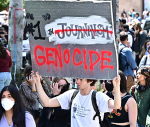You are here
Escalating confrontations signal new phase in Iran’s challenge
Jan 21,2024 - Last updated at Jan 21,2024
The confrontation with Iran is undergoing a significant shift, moving from the familiar realm of proxy wars to a more direct and aggressive style. Since the commencement of the war in Gaza, it has become evident that the clashes with pro-Iran militias and their allies are taking on different forms and spreading to various regions. The ongoing fight against Hamas, heightened tensions in Lebanon with Hizbollah, targeted strikes on Iranian sites in Syria and Iraq, and the assassination of leaders in the Iranian Revolutionary Guard (IRG) collectively point towards a new phase characterised by clearer and more assertive confrontations.
The emergence of the Houthis in targeting ships in the Red Sea has marked a turning point in Iran’s confrontation, as the Houthi capacity is intricately tied to Iranian support. Consequently, the rationale for directly addressing Iran itself is gaining prominence. The formation of coalitions, listing of the Houthis as a terrorist entity, and direct targeting of Houthi forces all send a resolute message to Iran.
Presently, Iran finds itself entangled in confrontations across different theatres, spanning Gaza, Lebanon, Syria and Iraq, particularly amidst escalating provocations by various militias against the United States and its interests. However, a noteworthy development indicative of a departure from proxy warfare is Iran’s direct involvement in conflicts, notably seen in attacks on Kurdistan and Pakistan. Such actions transcend the traditional proxy style, ushering in a new dynamic in confrontation with Iran.
The heightened tensions with Pakistan bring forth notable risks for Iran, albeit currently contained in focus as both nations target militias within their borders rather than engaging in direct attacks on national targets. Simultaneously, targeting Kurdistan could impede Iranian lobbying efforts and the mobilisation of its allies within Iraq, potentially stalling discussions about the withdrawal of foreign troops from the region. On a geographical level, Iran finds itself encircled by additional tightening threats, including clashes with the Taliban in Afghanistan, and even potential risks from Azerbaijan. Coupled with internal challenges, such as recent terrorist operations targeting Iranian military and civilians, the country faces a multi-faceted risk landscape.
The war against Iran is not only unfolding on various fronts but is also encroaching closer to its borders and within its territory. If this trend persists without effective regional containment, Iran will be confronted with a threefold challenge unlike anything experienced before. The struggle involves battling its allies in Syria, Iraq, Gaza, West Bank and Lebanon, while simultaneously grappling with escalating threats and internal instability along its borders.
All of this transpires amid a backdrop of socioeconomic difficulties and ongoing social unrest. Therefore, it is crucial to closely observe how the conflict in Gaza has not only shifted the dynamics of Iran’s confrontation on various fronts but has also intensified on multiple levels, presenting challenges unparalleled in Iran’s recent history.














Add new comment